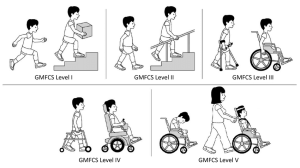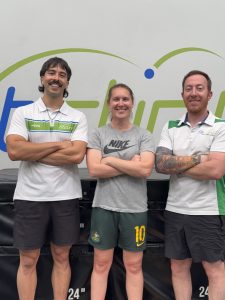“Empowering Movement: How Exercise Benefits Those with Cerebral Palsy”
What is Cerebral Palsy?
Cerebral Palsy (CP) is a group of neurological disorders that affects someone’s ability to move.
“Cerebral” refers to the brain, “Palsy” details weakness in or problems with using muscles voluntarily.
What are the common characteristics of Cerebral Palsy?
There are a few different ways in which CP can affect the body. CP affects the
movement, coordination & posture of an individual. People with CP may also
have problems with sight, hearing, speech & learning.
Depending on the individual’s Gross Motor Function Classification System (GMFCS) will determine which body parts are affected. An individual may have their legs more affected than their arms. Others may have only weakness in one arm with the other arm functioning normally.
Hence, simple activities such as walking, tying shoelaces, or handwriting can be a challenge.

What are the causes of Cerebral Palsy?
Below are some risk factors that might contribute to the development of Cerebral
Palsy:
- Genetic abnormalities
- Maternal infections
- Fetal Injury
- Pre-mature birth
- Low birth weight
- Brain infections
- Head Injury (i.e. shaken baby syndrome)
- Lack of oxygen
How can exercise help individuals living with Cerebral Palsy?
All types of exercise can help individuals who have CP.
Exercise can help improve physical strength, muscle endurance & mobility in
people with CP. Exercises such as stretching and mobility can improve range of motion and muscle spasticity.
Strength exercise can increase the muscle mass of an individual with CP leading to an improvement in their activities of daily living.
Physical activity can also reduce sedentary behaviours which may assist with their
cardiometabolic health and aerobic fitness. Exercise can improve sleep patterns and
sleep quality.
For someone living with CP having independence in their life is extremely important. Functional exercise aims to assist in improving independence. It does this through increasing their physical capacity and confidence in their body’s ability which enables them to do more activity.
Exercise performed in a group setting can promote the social health of someone living with CP, increasing their opportunities to engage in the community.
Exercise and physical activity can improve someone’s mental health, which is
important for people living with CP as they tend to have higher rates of depression
and anxiety.

Exercise Programs Considerations
Exercise programs can vary greatly for someone living with CP. Individuals should be provided with an exercise program from a qualified professional that targets their specific needs.
Exercise programs should consist of mobility, strengthening, balance & cardiovascular. Some simple exercises can include squats, push-ups, step-ups & walking.
Exercise programs should be performed 2-4 times per week, consisting of 1-3 sets, 6-15 reps at an intensity of 50-85% RM.
To see a significant benefit from exercise, programs should last for a minimum of 12 weeks and be progressed as required.
Ultimately, there is no cookie-cutter approach to prescribing an exercise program. Each program would need to take into consideration the above guidelines, with your goals in mind.
To read more on the recommendations for exercise and physical activity head over to the systematic review titled: Exercise and Physical Activity Recommendations for People with Cerebral Palsy
The information provided in this article is considered general advice. For specific advice related to your individual circumstances, speak to your healthcare provider.
If you like what you’re hearing from us Fit Clinic, subscribe to our social media channels, YouTube, Facebook, and Instagram. You can find us at Fit Clinic AU.
Otherwise, pop over to our website and subscribe there fitclinic.com.au and hear more from us.
